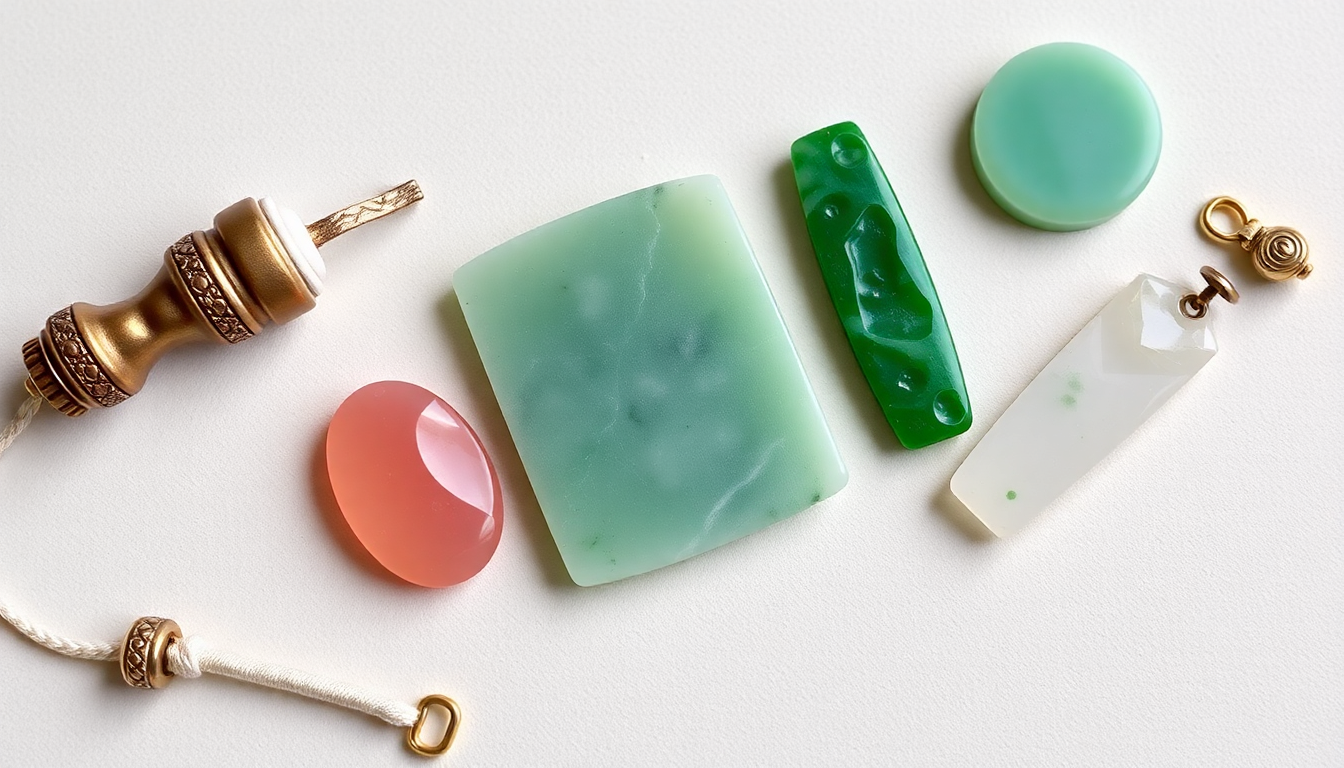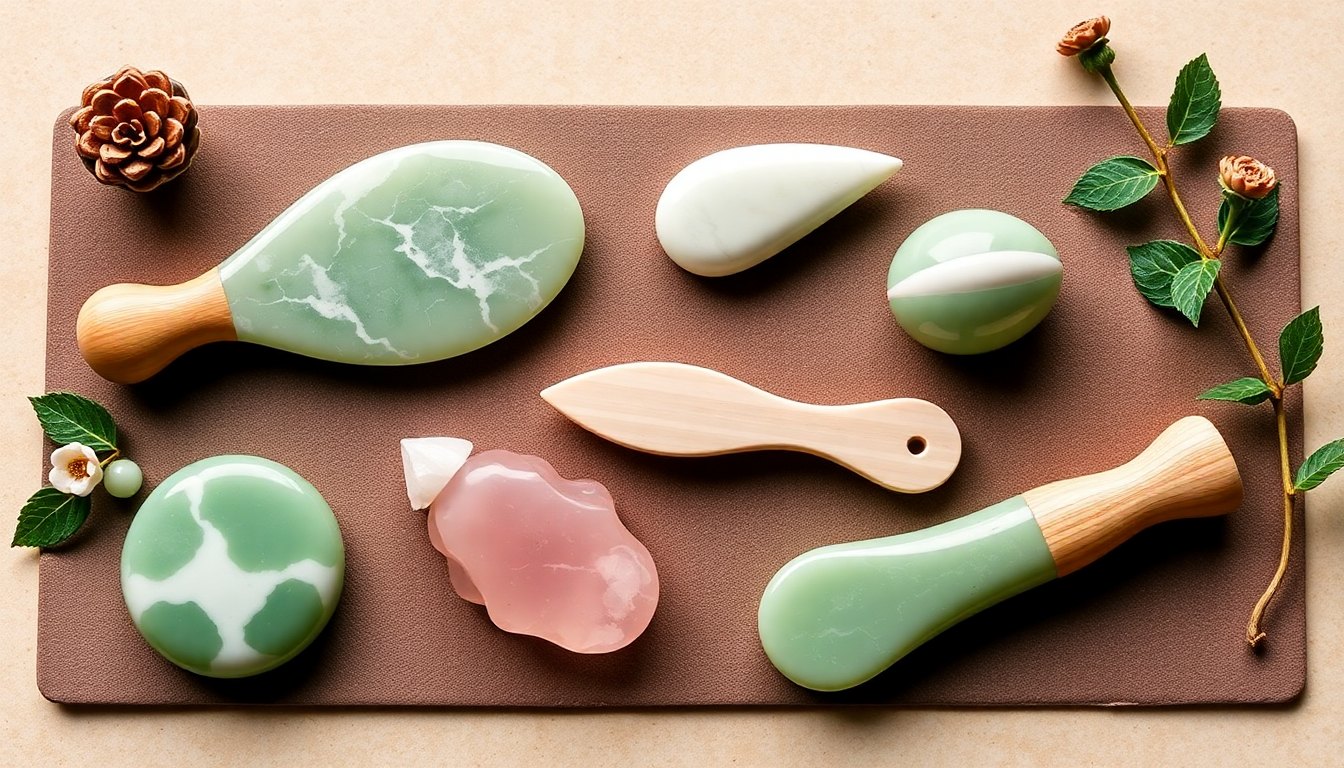Which Gua Sha Is Right for Your Skin?
Gua sha has gone from a traditional East Asian bodywork technique to a global skincare staple. From jade and rose quartz classics to purpose-built tools from brands like Lova Body, the choices can be overwhelming. This comprehensive guide helps you choose the best gua sha tool for your skin type and goals, teaches an evidence-informed lymphatic drainage routine, reviews benefits and safety, and explains realistic timelines for results.
Why This Guide Matters
- You're trying to decide between jade, rose quartz, or a modern engineered tool like Lova Body.
- You want step-by-step instructions for lymphatic drainage and sculpting without causing harm.
- You want realistic expectations and product guidance with trusted buying links.
Material Matters: Jade vs Rose Quartz vs Engineered Tools
At the surface, all gua sha tools transmit mechanical pressure and directional strokes to stimulate circulation and promote lymph flow. However, material and design influence comfort, glide, durability, and user experience:
- Jade: Traditionally used in Chinese skincare. Often cooler to the touch, which many users find soothing. Jade comes in a range of densities; higher-quality nephrite jade is dense and holds a smooth, polished edge well.
- Rose quartz: A denser stone in many cases, with a smoother, heavier feel. Its slightly firmer edge can make targeted sculpting (cheeks, jawline) easier for some users. Rose quartz is popularly associated with self-care aesthetics.
- Engineered tools (e.g., Lova Body): Designed with modern ergonomics and multiple edges for specific zones (under-eye, jaw, cheek). Materials vary — some use polished stones, others medical-grade stainless steel or composite blends designed for consistent edges and longevity.
How Design Changes Results
- Edge radius and polish determine how softly a tool sits on skin. Softer radii are better for sensitive skin.
- Contours and cutouts can cradle the jawline or cheekbone to increase contact and accuracy.
- Weight affects pressure: heavier tools need less manual force; lighter tools give more tactile feedback.
Which Tool Is Best for Different Skin Types and Goals
- Oily / Combination Skin: Any material works; focus on shape. Use slightly quicker, lighter strokes to reduce product buildup.
- Dry Skin: Use richer oils or serums to prevent friction. Rose quartz's glide can feel luxurious paired with hydrating oils.
- Sensitive / Reactive Skin: Choose a finely polished jade or a tool with a soft edge. Use very light pressure and avoid inflamed areas.
- Aging Skin & Loss of Tone: Tools with defined edges (rose quartz or engineered Lova Body shapes) help create more targeted lifting motions when used correctly over weeks.
- Puffiness & Lymphatic Congestion: Wider, ergonomic Lova Body designs often allow for longer, more efficient strokes to move lymphatic fluid from the face toward drainage points.
Step-by-Step Lymphatic Drainage Tutorial (Beginner-Friendly)
Perform this routine on clean skin after applying a facial oil or serum. Plan 5–12 minutes. Use light-to-medium pressure — minimal enough to avoid redness.
- Prep and open the exit points: Tilt your head back slightly and use the flat edge to sweep from the middle of the neck up toward the ear on each side 5–8 times. This opens lymphatic pathways.
- Lower neck and collarbone: With light pressure, sweep from the center of the chest along the collarbone toward the shoulder 5 times each side to clear the collecting areas.
- Jawline: Place the tool at the center of the chin and glide along the jaw toward the ear. Repeat 6–8 times per side.
- Cheeks: Start at the nose or mouth corner and sweep outward across the cheek to the ear, then down toward the neck. Repeat 6–10 times per side.
- Under-eye: Use the thinnest edge and extremely light pressure. Sweep from the inner eye outward to the temple 3–6 times to reduce puffiness.
- Forehead: Sweep from the center near the eyebrows upward and outward toward the temples 5–8 times.
- Finish: Repeat light sweeps along the neck and collarbone to clear any shifted fluid.
Advanced Variations: Sculpting, Targeted Tension Release, and Mixing Tools
- Sculpting: Use defined edges and slightly firmer pressure along the cheekbone and jawline for short, upward strokes. Keep motions controlled and repeat 5–10 times per zone.
- Tension release: For masseter (jaw-clenching) relief, press and glide across the angle of the jaw and just in front of the ear with moderate pressure for 30–60 seconds each side.
- Combo techniques: Use a cooling jade roller first to relax tissues and follow with a gua sha with sharper contours (rose quartz or Lova Body) for sculpting.
Real Results: What to Expect and When
Consistent practice is key. Individual factors such as fluid retention, sleep, diet, and genetics affect outcomes.
- Immediate: Many users notice reduced puffiness and a brighter look immediately after a session.
- 2–4 weeks: With 3–5 weekly sessions, expect improved skin texture, smoother appearance, and better product absorption.
- 6–12 weeks: More defined contours and a reduction in chronic muscle tension are possible with persistent, correct technique.
Note: Gua sha is not a substitute for medical treatments. If you have significant fluid retention due to health issues, consult a healthcare provider.
Evidence Snapshot
Research on gua sha in dermatology and integrative medicine points to benefits such as increased microcirculation, temporary reduction of muscle tension, and improved skin perfusion after treatment sessions. While larger randomized studies are limited, existing small studies and mechanistic research support the idea that controlled mechanical stimulation can improve local circulation and temporarily reduce puffiness.
Safety, Contraindications, and Best Practices
- Always use a lubricant to prevent friction damage; facial oils or serums work well.
- Do not use gua sha on inflamed, infected, or broken skin, including cystic acne or active rosacea flare-ups.
- Avoid aggressive pressure — watch for bruising or broken capillaries, especially if you take blood thinners.
- If you have implanted devices, severe halo scars, or recent facial surgery, consult a clinician first.
- Clean tools after each use with mild soap and water, then dry. Some engineered tools are sanitizable with alcohol; follow manufacturer instructions.
How to Choose a High-Quality Gua Sha Tool
Look for:
- High-quality materials with uniform polish and no rough edges.
- Ergonomic shapes that match your facial anatomy and allow multiple contact points.
- Trusted brands with clear stroke guides, warranty, and easy-to-find care instructions.
- Transparent sourcing and stone certification for natural materials like jade or rose quartz.
Price Ranges & What to Expect
- Budget stone tools: $10–$30 — basic materials; check polish/finish.
- Mid-range: $30–$70 — better polish, branded kits, often with guides or storage pouches.
- Premium / Engineered tools (e.g., Lova Body kits): $70–$200 — ergonomic design, multi-edge functionality, curated kits for face and body.
Comparing the Popular Options
- Jade gua sha tool: Pros — cooling, traditional aesthetic, gentle; Cons — variable quality, may be less dense than rose quartz.
- Rose quartz gua sha tool: Pros — often denser and better for sculpting, aesthetic appeal; Cons — can feel heavier, may be slicker.
- Lova Body gua sha tools: Pros — designed with drainage and sculpting in mind, ergonomic edges, often sold in kits with guidance; Cons — price premium for engineered design.
Where to Buy and What to Search For
For curated kits and tools optimized for lymphatic drainage and sculpting, explore Lova Body's collection to compare shapes, read stroke-by-stroke tutorials, and shop kits with clear guides. Visit Lova Body for options across jade, rose quartz, and engineered designs at best gua sha tool and check their gua sha resources at Lova Body gua sha tools.
Illustrations and Visual Guides
Visuals make technique much easier to follow. Below are detailed illustrations and annotated steps to help you learn proper direction and pressure.
Troubleshooting Common Issues
- Redness or Bruising: You're using too much pressure. Reduce force and frequency; increase lubricant.
- Tool Feels Slippery: Oil composition may be too slick; try a slightly thicker oil or serum for more control.
- No Visible Change: Technique matters. Follow lymphatic direction and open exit points (neck/collarbone) first.
FAQ (Extended)
- Can gua sha remove wrinkles? Gua sha can improve circulation and temporarily smooth fine lines by reducing puffiness and relaxing muscles, but it does not permanently erase deep wrinkles.
- How long should a session be? 5–15 minutes is effective for most routines. Longer sessions are okay if pressure remains light and skin remains comfortable.
- Can I use gua sha with retinol or exfoliants? Yes, but avoid vigorous treatment over freshly exfoliated or irritated skin. If using active serums, wait until skin has settled from any irritation.
Putting It All Together: Sample 10-Minute Routine
- Cleanse and pat skin dry. Apply 2–4 drops of facial oil.
- Open lymph exit points: sweep collarbone and neck (1 minute).
- Jawline and chin: 6 strokes per side (2 minutes).
- Cheeks and under-eye: 6–10 strokes per side, under-eye very gentle (3 minutes).
- Forehead and temples: 2 minutes finishing with neck sweeps (2 minutes).
- Clean your tool and store in a dry pouch (less than 1 minute).
Case Study Examples (Realistic Expectations)
- Alex, 28, Puffy Mornings: After 2 weeks of daily 8-minute sessions using a Lova Body kit, mornings felt less puffy and makeup applied more smoothly.
- Maya, 45, Tension Headaches: Using gua sha 3 times weekly for 6 weeks helped relax jaw muscles and reduced frequency of tension headaches when combined with jaw-stretching exercises.
- Ben, 35, Dull Skin: After 4 weeks of consistent use, Ben noticed improved circulation and better absorption of his vitamin C serum.
Care and Maintenance
- Wash tools after each use with mild soap and warm water. Dry immediately to prevent water spots.
- Store in a padded pouch to avoid chipping, especially for natural stones.
- For engineered metal tools, follow manufacturer cleaning recommendations; many are compatible with isopropyl alcohol for sanitization.
Final Comparison Summary
- Jade: Great if you want a cooling, traditional feel and a gentle tool for daily relaxation.
- Rose Quartz: Ideal for those seeking slightly firmer sculpting and a premium aesthetic.
- Lova Body: Best for users prioritizing ergonomic design, lymphatic drainage efficiency, and guided routines. See Lova Body's curated options at Lova Body kits.
Where to Start Today
If you're new to gua sha, start with a mid-range kit that includes clear instructions and a tool shape that matches your facial anatomy. If you prefer a purpose-built route to better drainage and sculpting, consider exploring Lova Body's collection for multi-edge tools and step-by-step tutorials: Lova Body gua sha tools.
Conclusion & Invitation
Choosing the right gua sha comes down to your skin goals, comfort preferences, and how much guidance you want. Jade and rose quartz deliver beautiful, traditional experiences, while engineered designs like Lova Body offer ergonomic advantages for targeted lymphatic drainage and sculpting. For tried-and-tested kits, shape guides, and tools engineered for real results, visit Lova Body to explore options and start a consistent practice that supports de-puffing, relaxation, and improved skin texture. Shop the collection and learn more at Lova Body — the best gua sha tool options to match your skincare goals.




Lasă un comentariu
Acest site este protejat de hCaptcha și hCaptcha. Se aplică Politica de confidențialitate și Condițiile de furnizare a serviciului.